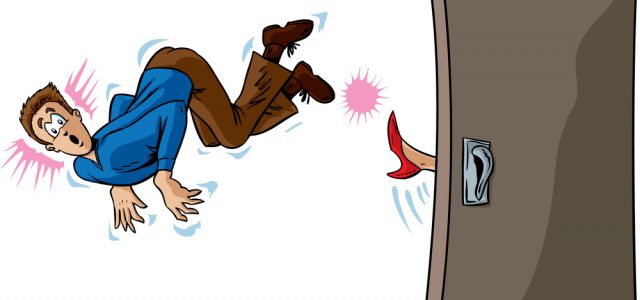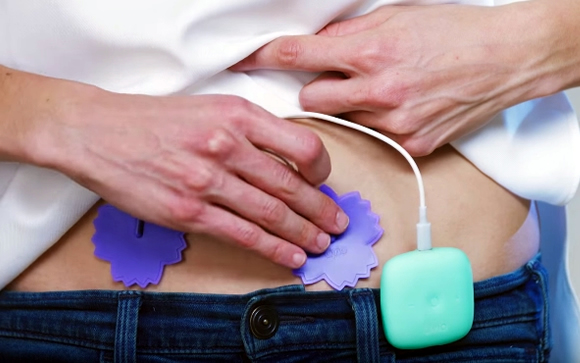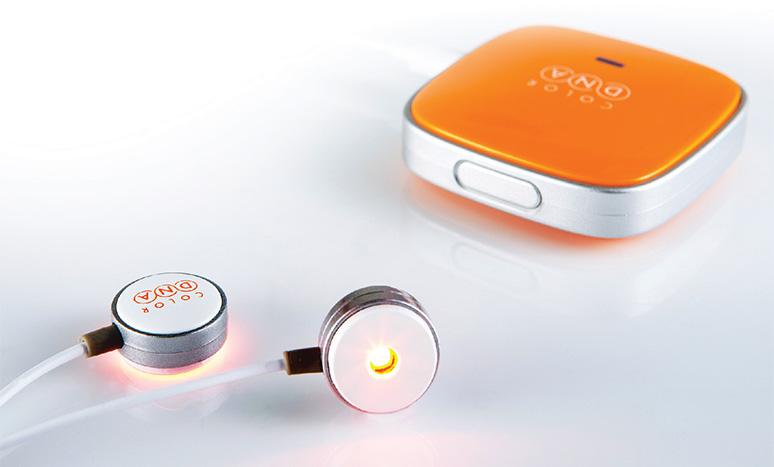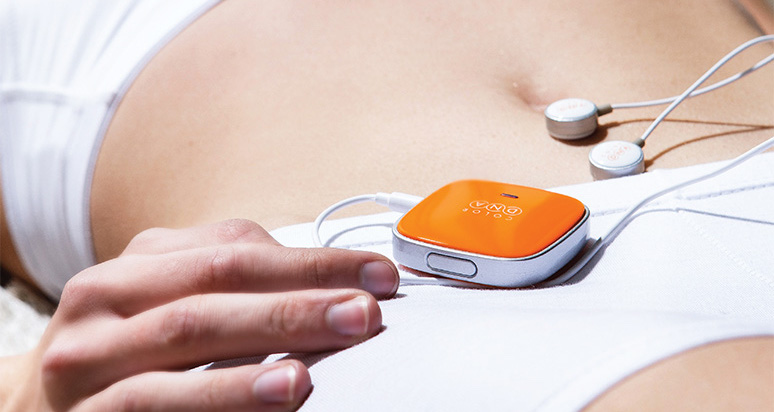Women’s Wearables are Kicking Menstrual Pain to the Curb
LifestyleNewsTechWellness February 13, 2025 Damon Mitchell

Imagine a world where once every month, you were host to an unwelcome guest for up to a week. What if this guest not only crawled into your bed with you, he would punch you in the gut at random, wearing brass knuckles? Not only that, he would draw your curtains closed and play only the worst music.

(Source: musiccourtblog.com)
If you’re a woman you don’t have to imagine this. It happens once a month. For women, at least until menopause, they get to spend about 25% of their lives as host to this awesome guest.
Oh sure, it’s all in the name of the human race, but that’s the great thing about being human beings. We have these powerful cerebral cortexes [read: brains]. We can find solutions.
Up until now, those solutions have been pills and hot water bags. The pills work like stopping a freight train with a spider web, all while putting mileage on the kidneys.
The hot water bags are great if one wants to stay in bed all day. Unfortunately for most women, there’s all this life to live and stuff.
Wearables to the rescue!
Two wearables, in particular, aim to rescue women form their pain: Livia and Color Seven. Both offer drug-free pain relief, focusing on disrupting the pain at the source, the ovaries.
Livia just recently completed their crowdfunding, but Color Seven is already on the market. Ladies, these could be the solutions you’ve been searching for.
The Livia device is two parts, the Livia brain, a squarish box which clips onto your hip, along with two adhesive skin attachments. Those attachments are electrodes they call skin gates.
The gates stop your brain from receiving the pain signals from downstairs.
In simpler terms (because I was confused), they keep your nervous system busy, so the pain signal is not received. You simply attach the gates to your skin, plug them into the Livia device, then go about your life, pain-free.

(Source: ConSalud.es)
Livia is such a good idea, they crushed their Indiegogo goals by 1339% of the target. Yeah, that well over 1000%.
Perhaps it’s because the manufacturers of Livia brand their product as “the off-switch for menstrual pain.” Even as a man, that got my attention.
Menstrual pain may be the unique experience of those of us with ovaries, but nobody wants to watch someone they love go through pain. That is its own kind of pain.
Moreover, if I found a real solution for my wife, I could be a hero. Of course, it’s not about me. It’s about her pain, but come on… a hero!
The product from the Korean company, Color Seven, is reminiscent of the Livia device but uses different technology.
While both products have a brain and two adhesive attachments for sticking to the skin, Livia uses electrolysis stimulators. Color Seven uses light pulses.

(Source: color7.co.kr)
The manufacturers call it “PAMS” technology. PAMS stands for Photo-Activated Modulation of Smooth muscle.
The simple explanation (again, simplified for me) is that Color Seven helps the smooth muscle cells around your lady parts relax to allow better blood flow.
Better blood flow means better transport, less pain. In fact, you should feel no pain.
To use Color Seven, women are to spend twenty minutes a day for five days each month. It could be anytime during the premenstrual period.
The device itself looks like a pair of headphones attached to a small MP3 player. I don’t know if that was intentional, but it looks familiar and doesn’t scream, “I’m premenstrual!” if someone sees you with it.

(Source: color7.co.kr)
Between the two, Color Seven’s technology is less familiar, but the Korean FDA backs it. It’s also the sexier looking wearable.
The electrodes on the Livia device look a little silly, like colored bathtub treads.
It doesn’t matter much. Nobody should see either of these wearables when they are on your body, so it will likely come down to which one works better.
Since Livia is still in pre-sale, the head-to-head comparison is a few months out, but we expect more products to hit this market before long.
If the technology is good, meaning it works, then we are looking at a serious dent in the over-the-counter pain meds business.